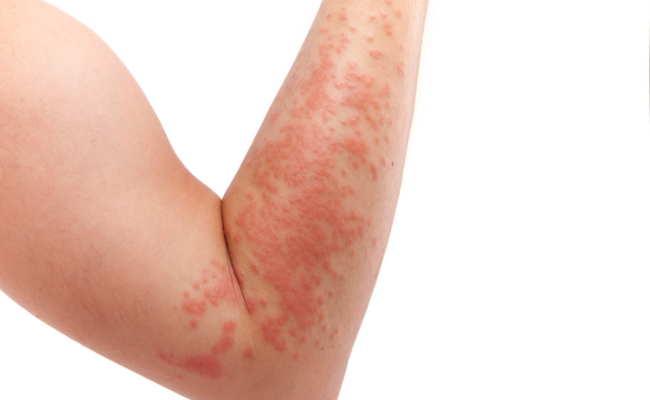What to do incase of First Aid For Allergic Shock?
- December 22, 2023
- No Comments

What is Allergic Shock?
Allergic shock, commonly known as anaphylaxis, is a manifestation of a severe and potentially life-threatening allergic reaction that requires immediate attention. Triggered by various allergens, including specific foods, insect stings, medications, or latex, anaphylaxis demands swift recognition of signs and symptoms, underlining the critical need for immediate intervention. While most allergies respond well to standard medication, anaphylaxis serves as a stark reminder of situations where reactions can escalate into life-threatening complications. Anaphylaxis is characterized by a severe, systemic response affecting multiple systems within the body, including the heart, circulatory system, lungs, skin, digestive tract, eyes, and the nervous system. Common triggers encompass peanuts, milk, wheat, eggs, insect stings, and specific medications. Immediate medical attention is crucial to interrupt the progression of this severe allergic reaction, underscoring the importance of recognizing early indicators for timely intervention and risk mitigation.
Why is it important to grasp the severity of allergic shock?
Allergic shock triggers a rapid and systemic release of chemicals, including histamine, resulting in symptoms that impact various organs. The severity of allergic shock varies, often progressing rapidly, emphasizing the necessity for quick and appropriate first aid. Symptoms include difficulty breathing, swelling of the face and throat, a drop in blood pressure, and a rapid or weak pulse. Understanding the severity of allergic shock is pivotal for several reasons. Firstly, it empowers individuals and bystanders to recognize the urgency of the situation, prompting them to take immediate action. Secondly, comprehending the potential severity underscores the importance of having an emergency action plan, especially for individuals known to have severe allergies.
How to Take Immediate Actions in the Case of Allergic Shock?
Allergic shock, or anaphylaxis, is a medical emergency that requires swift and decisive action. Recognizing the signs and symptoms and knowing how to respond promptly can make a significant difference in the outcome. Here is a detailed guide on the immediate actions to take in the case of allergic shock:
- Initiate Emergency Assistance: The first and foremost step in managing allergic shock is to initiate emergency assistance. Immediately contact emergency services by dialing the appropriate emergency number. Time is of the essence in treating anaphylaxis, and professional medical help is essential.
- Administer Epinephrine: If the individual experiencing allergic shock has been prescribed an epinephrine auto-injector, such as an EpiPen, promptly administer it. Epinephrine is a crucial medication that counteracts the effects of the allergic reaction. It works by narrowing blood vessels and opening airways, helping to alleviate symptoms and prevent the reaction from worsening.
- Position the Person: After administering epinephrine, have the person lie down on their back. This position helps improve blood flow and circulation throughout the body. Additionally, elevate their legs, which can aid in maintaining blood pressure. These measures contribute to optimizing blood circulation, which is essential during anaphylaxis.
- Monitor Breathing: Keep a close eye on the person's breathing. Watch for signs of respiratory distress, such as rapid or labored breathing, wheezing, or a sudden inability to breathe. If the person stops breathing or is having difficulty breathing, be prepared to perform CPR (Cardiopulmonary Resuscitation) immediately.
- Loosen Tight Clothing: Improve airflow by loosening any tight clothing, particularly around the neck. This step can help ensure unobstructed breathing and enhance the person's comfort during this critical situation.
- Identify the Allergen: If possible, try to identify and remove the allergen that triggered the allergic reaction. This step is crucial to prevent further exposure and mitigate the risk of a continued or secondary reaction. However, prioritize this action only if it can be done without delaying the administration of epinephrine or other necessary first aid measures.
Treatment Solution for Allergic Shock?
While the initial first aid steps are crucial in managing allergic shock, it is important to emphasize that they are not a substitute for professional medical care. After administering first aid, it is imperative to seek immediate medical attention for the person experiencing anaphylaxis. Even if symptoms appear to resolve, monitoring by healthcare professionals ensures a thorough assessment and provides any necessary follow-up care.
Benefits of Prompt First Aid for Allergic Shock:
- Increased Survival Rates: Immediate first aid, including the prompt administration of epinephrine, significantly increases the chances of survival during anaphylaxis. Quick intervention can counteract the life-threatening effects of the allergic reaction, providing a crucial lifeline until professional medical help arrives.
- Prevention of Complications: Timely first aid helps prevent complications associated with allergic shock, such as respiratory failure, cardiac arrest, or severe organ damage. The sooner the reaction is addressed, the lower the risk of lasting consequences.
- Reduced Recovery Time: Early intervention can lead to a faster recovery. Seeking professional medical care promptly allows for comprehensive treatment and monitoring, ultimately reducing the overall recovery time for the individual.
- Minimized Anxiety and Psychological Impact: Immediate first aid not only addresses the physical aspects of allergic shock but also has psychological benefits. Knowing that appropriate measures were taken promptly can significantly reduce anxiety for both the individual experiencing anaphylaxis and those providing assistance.
- Educational Opportunities: Every instance of allergic shock provides an opportunity for education and awareness. Understanding the triggers and symptoms of anaphylaxis empowers individuals and those around them to take preventive measures and respond effectively in case of future incidents.
- Community Preparedness: Promoting awareness and education about first aid for allergic shock contributes to community preparedness. Knowledge dissemination through first aid training programs, educational campaigns, and public health initiatives equips communities to respond effectively to emergencies, potentially saving lives.
Comments (0)